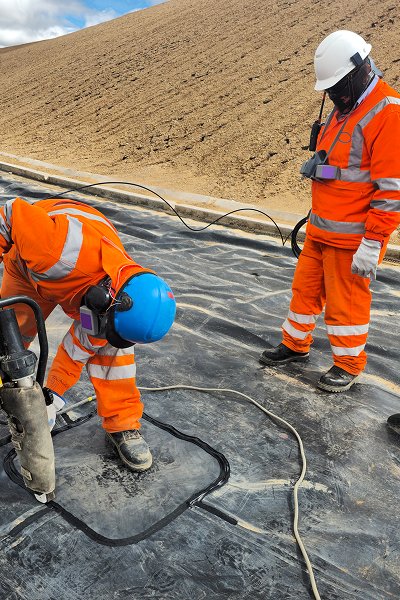Plastic Grass Grid is made of high-performance thermoplastics such as high-density polyethylene (HDPE) or polypropylene (PP). These materials not only have excellent corrosion resistance, aging resistance and UV resistance, but also maintain the stability of physical structure in sub-zero or high temperature environments. The high toughness and impact resistance of HDPE and PP enable plastic grass grids to maintain their original structure under irregular terrain or multiple loads, and are not easy to break or fragment.

Plastic Grass Grid Structural design features
The core of the design of Plastic Grass Grid lies in its honeycomb grid structure, which can not only effectively disperse the vertical load, but also provide sufficient growth space and protection layer for grass roots. Common structures include:
Cross-shaped grid type: has good tensile performance, suitable for medium and high load requirements;
Honeycomb hexagonal grid: the most common, with uniform load capacity and good structural stability;
Open circular hole structure: suitable for scenes with high permeability requirements, such as rain gardens;
Modular splicing structure: easy to install and maintain quickly, and can be freely cut and combined according to the site.
Mechanical properties and load-bearing capacity
Plastic Grass Grid has load-bearing capacity. Under the premise of laying and compacting the base layer, its load-bearing capacity can reach 120~250 tons per square meter, which can fully meet the traffic needs of cars, small trucks and even fire trucks.
Force dispersion transmission mechanism: The grid structure makes the external load not concentrated on a single point, but conducts and diffuses to the surrounding to avoid local damage to the structure;
Lateral shear resistance design: The support convex teeth or anti-slip design on the edge enhance the shear stability between the structures and effectively prevent "expansion sliding";
Three-dimensional column support structure: Some products are equipped with vertical reinforcement ribs or columns to improve the ability to resist compression deformation.
Eco-friendliness and lawn protection
Plastic Grass Grid prolongs the life of the lawn by protecting the grass root system. Its main functions are:
Preventing rolling damage: The three-dimensional structure of the grid provides a "guardrail" for the grass roots, reducing the direct pressure of wheels or people on the grass;
Limiting soil movement: Effectively fix the base soil or vegetation layer to prevent the grass from being washed away or turned up;
Enhancing water permeability and water retention: Avoiding muddy water accumulation problems and creating a suitable water regulation environment.
Temporary or permanent parking lots
Lastic Grass Grid provides a solution for green and environmentally friendly parking lots. Its excellent bearing capacity can meet the traffic requirements of small vehicles, medium-sized trucks and even fire trucks. After laying, lawns can be planted directly, which not only increases the green area, but also reduces the impact of traditional concrete on the urban heat island effect.
Advantages:
Reduce the hardened area of the ground;
Increase the permeability and relieve the drainage pressure;
The structure is stable and reusable.

Public green space and urban landscape roads
Places such as city squares, parks, and landscape roads need to take into account both the beauty of greening and the needs of pedestrian traffic. Plastic Grass Grid is widely used in these areas to protect lawns and reinforce trails, reducing the damage to the grass caused by pedestrians.
Design concept:
Protect the roots of the lawn;
Reduce the difficulty of later maintenance;
Achieve the integration of beauty and practicality.



